
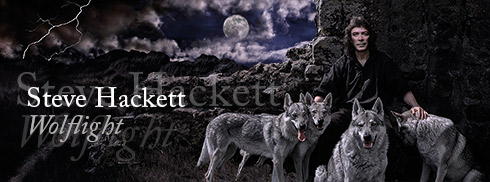
Nobody could have guessed at the time that Steve Hackett would present the successor to his celebrated last solo album Beyond The Shrouded Horizon a full four years later. The reason behind it is very simple though. Hackett's Genesis Revisited II project was originally set for about a year. Recording the album didn't take very long (and was relatively close to the originals unlike the first iteration) and he announced a tour for early to mid-2013. Hackett probably wasn't the only one surprised by the success and it was decided to extend his Genesis Revisited Tour to 2015 renaming it Genesis Extended. Only recently was he in South America; the last show of the tour will be at the Night of The Prog Festival at Loreley this summer. By then, his new album will have long been released.
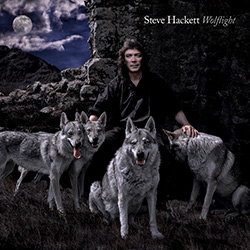 So due to his Genesis Revisited tour, he could only work on Wolflight during the tour breaks. Steve originally planned to complete the album sooner, but over the last year it was increasingly clear that it wouldn't be possible to release it before early 2015.
So due to his Genesis Revisited tour, he could only work on Wolflight during the tour breaks. Steve originally planned to complete the album sooner, but over the last year it was increasingly clear that it wouldn't be possible to release it before early 2015.
Hackett often posted on Facebook or his blog to show whenever he was working on the album and with whom. Roger King, who's been at Hackett's side for a long time and is responsible for the trademark Hackett sound, is one of the frequently recurring names. Steve drew inspiration for the many new elements he weaved into his music from his travels and the encounters he made. Simply put, those who liked Beyond The Shrouded Horizon will also like Wolflight - but that doesn't quite do the album justice.
Wolflight describes the time before dawn, the so-called blue hour, when the world is lit in a strange blue light - and the wolves come out to hunt.
Artwork
Jo and Steve Hackett have been friends with Angela and Maurizio Vicedomini for some years now. The two photo artists did not only create the coffee table book Genesis: In Our Flight Of Fancy, they were also responsible for the pictures and the artwork for the albums Genesis Revisited II, Genesis Revisited: Live At Hammersmith and Genesis Revisited: Live At The Royal Albert Hall. This time, they also included Steve himself in their overall concept for the artwork. He was actually photographed among the wolves. The only modification was transforming the original daylight shot into a night shot - so the moon was edited in later. Steve recounts his encounter with the wolves in some detail on the bonus Blu-ray included in the Wolflight media book. A summary of the event can also be found on his website here. In addition to the wolf experience, all songs are set to their own photo scenes. The same had already been done for Genesis Revisited II. The two artists practically travelled half the world to find the right motifs.
There are three physical formats besides the digital version, but it's worth examining the vinyl editions separately. The 2LP is available in a black and a clear edition. The latter is strictly limited. The 2LP also contains the album as a CD. But in addition, there's the clear-blue vinyl edition, which was only available at the two launch events that were organized by InsideOut together with the German Genesis Fanclub it.
Then there's the standard CD in a jewel case, which also includes a media book with a Blu-ray. Media books are not uncommon for InsideOut. To Watch The Storms, Genesis Revisited II as well as Beyond The Shrouded Horizon were also released in this format - sometimes as special editions. It's also a special edition in Wolflight's case and features two bonus tracks (more on that later). The booklet is stapled into the media book and there is enough space near the staples so none of the text is obscured - much to the delight of many collectors. The discs themselves come in cardsleeve-like cases that are fixed in the media book. So particularly careful fans may want to take the discs out and place them in separate cases.
[The following information only applies to selected countries]
Since the bonus disc is a Blu-ray, this edition of the album needed to have an FSK notice on it. The solution is the same as always with InsideOut: Instead of printing it on or attaching a sticker, it's only on the front inlay and can be thrown away after the plastic wrap is removed. That way the cover itself isn't changed. A definite thumbs up!
The Blu-ray contains a 5.1 surround mix of the album, a track-by-track documentary by Steve as well as an account on the album's creation and the above mentioned brief summary regarding the photo sessions for the cover.
Out Of The Tunnel's Mouth was a kind of break-up album at the time, basically his equivalent of Face Value or US. The album had some remarkable songs, but also one major weakness: It wasn't possible to record it in his studio (so there were no real drums, for example). The successor, Beyond The Shrouded Horizon, still had many more contemplative moments, but it marked the actual step out of the tunnel's mouth for Steve. With Wolflight Steve now gives us an album at a time when he's completely at peace with himself. And that's exactly the impression you get when listening to it.
Lots of things had been said before the release. Sometimes you could get the impression that it would turn out to be a world music album. World music guru Peter Gabriel wasn't the only one to do something like that in the Genesis sphere: In 1996, Collins implied before the release of Dance Into The Light that the album would have strong world music influences. But in the end, he admitted that he had gotten cold feet and apparently hadn't followed up on many of his ideas. It isn't quite the same with Steve - on a very basic level, his music has an entirely different dynamic and is more playful. So there's no need to worry that the end result is completely unorthodox and strange - on the contrary. The inspirations and influences partly taken from world music are more subtle and woven into Hackett's music. Thus, there are a few points here and there that really stick out, but it's not a musical revolution all in all. Steve also explained this in great detail at the launch events: The influences and inspirations were definitely meant to leave their mark, but weren't supposed to dominate the album.
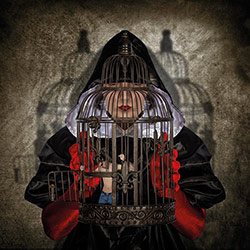 What is more noticeable on Wolflight, however, are the orchestral parts - especially compared to earlier albums. Steve also explained this development at the launch events: "What I wanted to do - compared to Beyond The Shrouded Horizon or Out Of The Tunnel's Mouth - was, most of all, to develop new ideas for the production. I wanted to have an orchestra that can sound like a five-man band and vice versa. I used to make strictly rock/ progressive rock, acoustic or classic albums and I wanted to combine them this time."
What is more noticeable on Wolflight, however, are the orchestral parts - especially compared to earlier albums. Steve also explained this development at the launch events: "What I wanted to do - compared to Beyond The Shrouded Horizon or Out Of The Tunnel's Mouth - was, most of all, to develop new ideas for the production. I wanted to have an orchestra that can sound like a five-man band and vice versa. I used to make strictly rock/ progressive rock, acoustic or classic albums and I wanted to combine them this time."
So it's not a coincidence that Wolflight sounds more powerful and bigger than its immediate predecessors. Furthermore some of Steve's songs have the typical length of Genesis' long tracks.
Out Of The Body kicks off a highly interesting melodic journey leading through different themes. The instrumental part after the wolf howl at the beginning is a driving opener that would probably also work well live in its current form. Most of Steve's last few albums didn't have a purely instrumental opener, but those that did really delivered. A good example would be Transylvanian Express on the Special Edition of Wild Orchids or the bass-heavy Omega Metallicus on Darktown, which is often underappreciated. And speaking of Wild Orchids: The latter not only included the track Wolfwork, but also the song Howl, which would have been a great opener for Wolflight ...
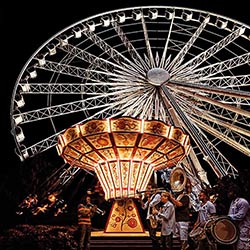 The title song Wolflight is about 8 minutes long and also has a music video with professional production values. Wolflight is clearly dominated by progressive influences and thus very interesting to fans of the early years of Genesis. The intro alone is remarkable since it features the tar, an old lute-like instrument. The song itself is about the early roots of civilisation in Europe and parts of Africa. Hackett relies on metaphors for his text, the title, Wolflight, being a reference to the above mentioned blue hour right before sunrise when the world is dipped in a mystical blue light. This, in turn, fits well with the theme of the roots of our civilisation. Regarding the music itself, acoustic and melodic elements (it should be mentioned that Steve's vocals are very good) alternate with powerful and driving rock parts dominated by Steve's wonderfully unique guitar play accompanied by orchestral sounds. All of that is captured with great intensity in the music video. Steve himself talks about the song in this interview video:
The title song Wolflight is about 8 minutes long and also has a music video with professional production values. Wolflight is clearly dominated by progressive influences and thus very interesting to fans of the early years of Genesis. The intro alone is remarkable since it features the tar, an old lute-like instrument. The song itself is about the early roots of civilisation in Europe and parts of Africa. Hackett relies on metaphors for his text, the title, Wolflight, being a reference to the above mentioned blue hour right before sunrise when the world is dipped in a mystical blue light. This, in turn, fits well with the theme of the roots of our civilisation. Regarding the music itself, acoustic and melodic elements (it should be mentioned that Steve's vocals are very good) alternate with powerful and driving rock parts dominated by Steve's wonderfully unique guitar play accompanied by orchestral sounds. All of that is captured with great intensity in the music video. Steve himself talks about the song in this interview video:
There's barely enough time to completely absorb all the impressions from the incredibly strong title track before you're taken on the next journey with Love Song To A Vampire. With more than 9 minutes, the song is even longer than Wolflight and also has its own music video. This time though, it wasn't produced by InsideOut, but in a friendly turn by a friend of Steve and Jo. Love Song To A Vampire is quieter than the title track overall, but also starts off with an acoustic guitar intro typical for Hackett (similar to earlier albums like the piece Brand New from To Watch The Storms) and makes it seem like the song might really take off later. But the vocals remain ballad-like at first, repeatedly culminating in harmonious singing similar to Fire On The Moon. These parts basically form the wordless chorus. Interestingly, we only get the first few tunes from the electric guitar about four minutes into the song and at the very end it finally takes off to a rocking finish. The song may well become a fan favourite.
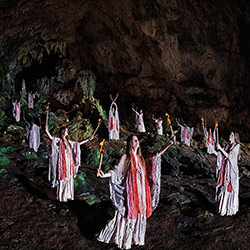 The album gets a little more straightforward and less complex with The Wheel's Turning. The intro with Hackett's recitative - which includes the German word "Schadenfreude" - seems to suggest that another long and opulent track might follow, but when the vocals join in it takes a different course: faster and more straight forward than the two previous songs. The rhythm played by the strings introduced at a later point is somewhat reminiscent of A Dark Night In Toytown. The song has a certain flair that may seem reminiscent of ELO for some.
The album gets a little more straightforward and less complex with The Wheel's Turning. The intro with Hackett's recitative - which includes the German word "Schadenfreude" - seems to suggest that another long and opulent track might follow, but when the vocals join in it takes a different course: faster and more straight forward than the two previous songs. The rhythm played by the strings introduced at a later point is somewhat reminiscent of A Dark Night In Toytown. The song has a certain flair that may seem reminiscent of ELO for some.
Corycian Fire also starts off with acoustic guitars before the exotic sounds of a duduk and a harp first lead up to soft vocals and then mark the transition over to the vocals of the verse driven by the drums. The song's second half is instrumental and in addition to the increasingly dominant sounds, orchestral parts and choral singing are introduced into the mix. These in turn also grow more and more dominant. Steve explains the idea behind it:
Earthshine is an acoustic instrumental that's a little calmer again. It's similar to songs like Black Light or Horizons and can well be regarded as an intro to Loving Sea. The latter is also heavy on the acoustic guitar but the polyphonic vocals and the pleasing melody are far more dominant.
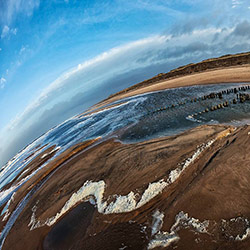 Black Thunder reintroduces heavier elements. This is in line with its theme: The song is about slavery and persistent discrimination against people with darker skin. Hackett's arrangement of the song is similar to his old Vampyre With A Healthy Appetite (but he fortunately leaves out the overly distorted vocals). Vocal parts accompanied by few instruments alternate with rock parts. Both are relatively brief, which creates some palpable tension. Then the vocals stop and the song turns into a playful rock song that repeatedly combines orchestral elements with electric guitars and drums. The resulting tension creates some genuinely surprising moments, perfectly reinforcing Hackett's brilliant guitars, of course. The song finishes without drums fading off to ethereal nirvana. A brilliant piece of music! The only tiny flaw is that the music doesn't always perfectly encapsulate the song's theme.
Black Thunder reintroduces heavier elements. This is in line with its theme: The song is about slavery and persistent discrimination against people with darker skin. Hackett's arrangement of the song is similar to his old Vampyre With A Healthy Appetite (but he fortunately leaves out the overly distorted vocals). Vocal parts accompanied by few instruments alternate with rock parts. Both are relatively brief, which creates some palpable tension. Then the vocals stop and the song turns into a playful rock song that repeatedly combines orchestral elements with electric guitars and drums. The resulting tension creates some genuinely surprising moments, perfectly reinforcing Hackett's brilliant guitars, of course. The song finishes without drums fading off to ethereal nirvana. A brilliant piece of music! The only tiny flaw is that the music doesn't always perfectly encapsulate the song's theme.
The second to last song on the regular 10 track album is a little more unusual. Dust And Dreams is an instrumental which seems quite simple and straightforward at first. It starts off with a subdued rhythm and slowly builds up to a field of sounds created by different instruments without being very guitar-heavy at first. Suddenly the slightly exotic sounding rhythm has a kind of break, turning it into a straight forward drum rhythm that is elegantly faded in. It's accompanied by different harmonies that flow together nicely and Steve playing his guitar solo. It makes the song seem a lot more intense and menacing. The song seems slightly more aggressive towards the end, finally making the subtle transition to the album's last song, Heart Song, so that suddenly the music is dominated by pleasant and harmonious sounds. Then Steve sings again- this time about love. He declares his love to his wife Jo in a way that couldn't have been more clear even when written by someone like Phil Collins ("let me find a way to love you every single day ... I want to stay"). Thus he ends a very dramatic, heavy and deep album on a high note, which is quite a genius thing to do.
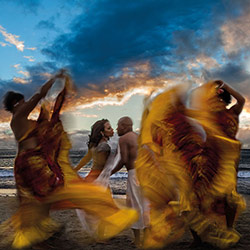 The album's core comprises ten songs. According to Steve and Jo, they all deal with the themes of struggling for freedom and the threats we face - with a look at our ancestors, but also going to a personal level. The media book features two additional songs, however, and there's another one on the vinyl editions..
The album's core comprises ten songs. According to Steve and Jo, they all deal with the themes of struggling for freedom and the threats we face - with a look at our ancestors, but also going to a personal level. The media book features two additional songs, however, and there's another one on the vinyl editions..
Pneuma is relatively unspectacular - one of Hackett's acoustic pieces in the spirit of Earthshine. This kind of music somehow always prompts comparisons with Horizons. Midnight Sun is far more interesting. It was recorded together with Todmobile, the band Steve gave two concerts with in Iceland (a detailed review of the concerts can be found here). The vocals are the remarkable part here since Eyþór Ingi Gunnlaugsson, the singer of the band, is singing instead of Steve. The song is pretty straightforward and not really progressive compared to the other songs on the album, but that's not a bad idea towards the end of the album. Caress is another acoustic piece Steve wrote specifically for the vinyl edition since there was still enough room on the fourth side. It could even be rated higher than Earthshine, which was included on the "core album". A nice unplugged piece by Steve and far more than just a quick bonus track on the side.
Odd: Hackett drew inspiration from himself
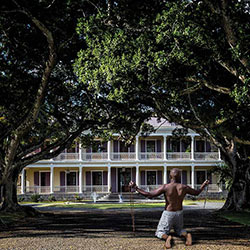 It's a well-known fact that fans find both the needle in the haystack and the fly in the ointment. Thus, a few instances came to light where Hackett not only drew inspiration from world music but also from his own past.
It's a well-known fact that fans find both the needle in the haystack and the fly in the ointment. Thus, a few instances came to light where Hackett not only drew inspiration from world music but also from his own past.
This was one of the questions asked at the launch event in Dortmund: Did Steve consciously decide to use a tune from Fire On The Moon for the title track Wolflight? According to Hackett himself, he wasn't aware of it and he couldn't identify the precise parts in question when asked on the spot. We took the time to contrast the parts and you should be able to hear where they match if you listen closely. (SoundCloud Link).
Further examples: Corycian Fire "quotes" melodies of his two Defector songs The Steppes and Two Vamps As A Guest. Furthermore, the beginning of Dust And Dreams is very similar to The Pool Of Memory And The Pool Of Forgetfulness (the latter can be found on the album Metamorpheus) and the drum style starting at 3.15 seems to be a sample from Valley Of The Kings (from around 1.40). In his final song, Heart Song, he used the same (?) sequence of chords as in the song The Summer Backwards from SQUACKETT's A Life Within A Day.
The bonus Blu-ray contains assorted making-of documentaries, one is the quite amusing account of how the album cover was created. In addition, there's also a track-by-track explanation by Steve that provides some background to the songs. Some of the videos can also be found on Youtube and are embedded in this review.
The 5.1 surround mix, however, doesn't live up to the expectation. Of course, Genesis fans are a little spoiled because of the Genesis box sets and Peter Gabriel's UP. Especially the latter set standards for 5.1 mixes that are hard to beat. Wolflight is more of an ambient mix than a true 5.1 mix. There aren't any surround effects for individual instruments or vocals, it just introduces an additional sense of space. That's far less than what it could have been. It doesn't make the album worse, of course, but it's wasted potential.
Conclusion
Steve Hackett has had a remarkable output over the last few years, which required him to be on tour almost non-stop. His music is still a highly interesting symbiosis of different styles and influences. This factor gets a whole new dimension with Wolflight.
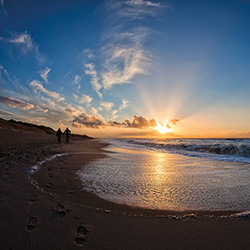 He masters both harmonious melodies and complex instrumentals. Wolflight is the album of a traveller who never has a fixed aim and is at peace with himself at the moment. But sometimes you wish for a bolder Hackett with more surprises up his sleeve after his many good albums. It's not a thing of changing compositions or arrangements - they're on the same very high level as always - but instead Steve needs to watch out that his sound doesn't get too static. Large parts of Wolflight's sounds seem a little too familiar. His vocals on Wolflight are well-produced, but sometimes it might have been a good idea to bring in guest singers as well. Steve also needs a little push in terms of producing. He should surprise his fans with some different sounds and novel ideas in the production of his next album. The focus shouldn't be on including exotic instruments, but on evolving his sound, especially the drums. If he manages to do that, there's a lot of exciting music to follow after his solid to strong album Wolflight. In either case, one thing should be very clear: Steve Hackett is the one who keeps the progressive legacy of Genesis alive.
He masters both harmonious melodies and complex instrumentals. Wolflight is the album of a traveller who never has a fixed aim and is at peace with himself at the moment. But sometimes you wish for a bolder Hackett with more surprises up his sleeve after his many good albums. It's not a thing of changing compositions or arrangements - they're on the same very high level as always - but instead Steve needs to watch out that his sound doesn't get too static. Large parts of Wolflight's sounds seem a little too familiar. His vocals on Wolflight are well-produced, but sometimes it might have been a good idea to bring in guest singers as well. Steve also needs a little push in terms of producing. He should surprise his fans with some different sounds and novel ideas in the production of his next album. The focus shouldn't be on including exotic instruments, but on evolving his sound, especially the drums. If he manages to do that, there's a lot of exciting music to follow after his solid to strong album Wolflight. In either case, one thing should be very clear: Steve Hackett is the one who keeps the progressive legacy of Genesis alive.
order Wolflight:



Brand new album by Martin Levac. Contains eleven Genesis-classics in Jazz style.